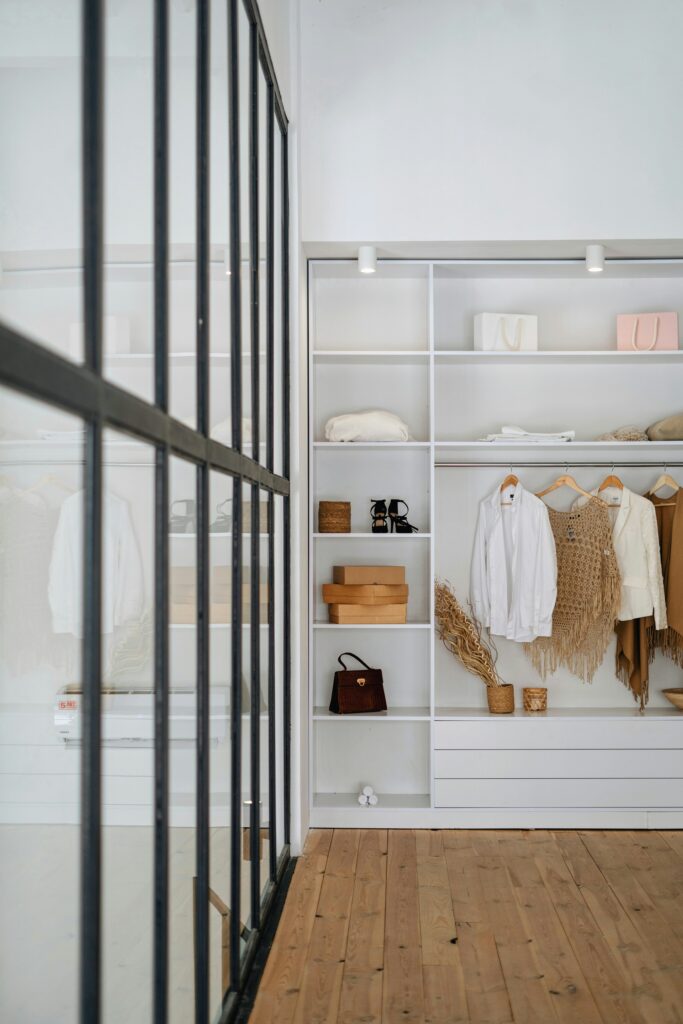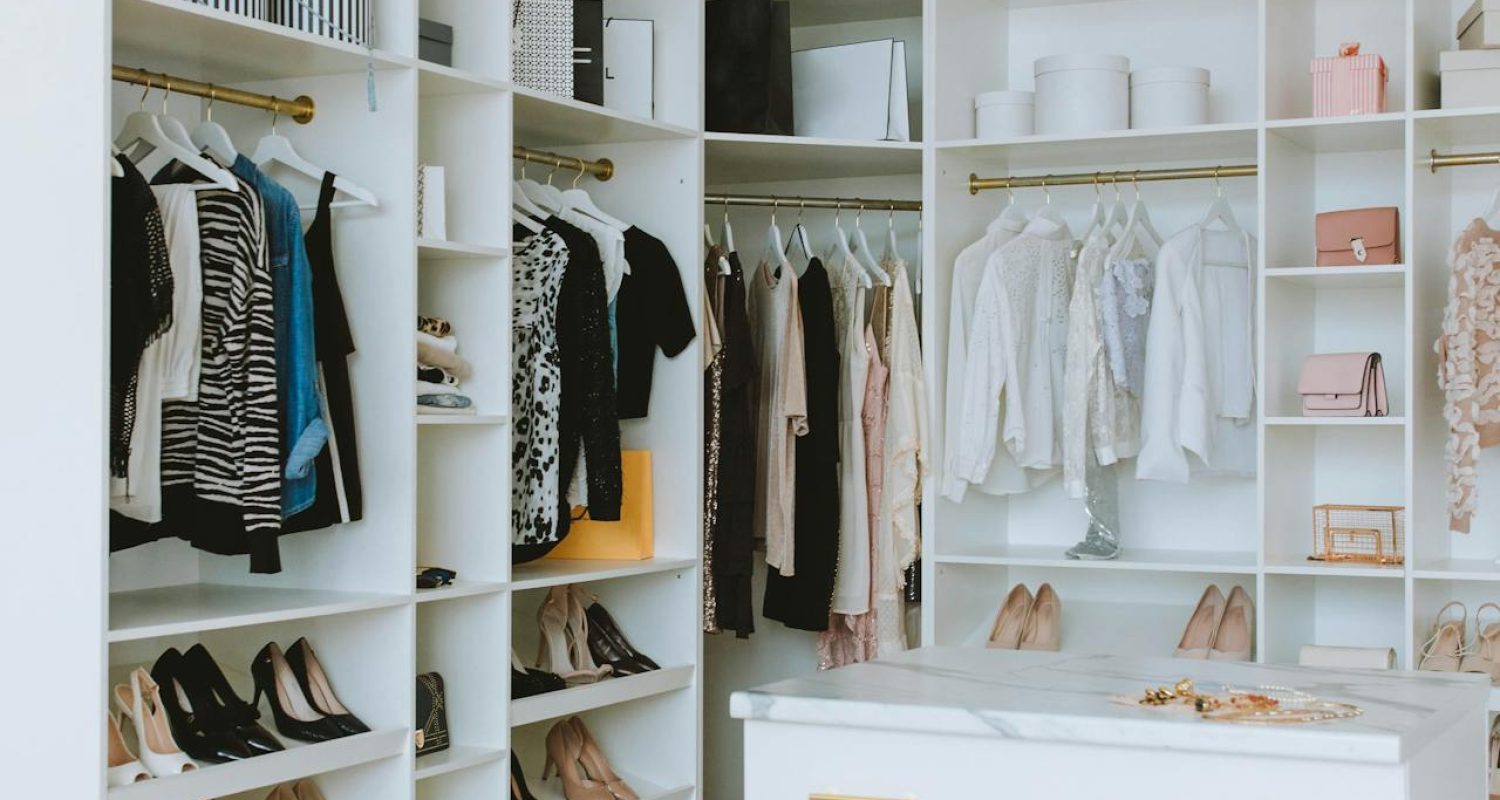Creating an Ethical Wardrobe: A Step-by-Step Guide to Building a Sustainable and Stylish Closet
Are you in search of a comprehensive guide that not only helps you build a wardrobe reflecting your personal style but also aligns with your values? Your search ends here! This guide is designed to walk you through a step-by-step process of creating an ethical, sustainable, and stylish wardrobe, making it a one-stop solution for all your fashion needs.
As the fashion industry’s environmental footprint continues to grow, it’s crucial to embrace the concept of ethical clothing. By investing in responsibly sourced, produced, and fair trade pieces, you not only look fabulous but also contribute to a healthier planet.

Our guide will cover everything from understanding the importance of ethical fashion to practical tips on building your sustainable closet. We will help you navigate through different aspects, including choosing eco-friendly materials, supporting ethical brands, and extending the life of your garments through mindful care.
Whether you’re a fashionista or a minimalist, this guide is thoughtfully tailored to suit every style. We understand that fashion is a personal expression, and we’re here to help you create an ethical wardrobe that speaks to your values and showcases your unique sense of fashion. So, let’s embark on this journey towards a more sustainable and stylish future together. Let’s get started!
Understanding Ethical Fashion and the Impact of Fast Fashion
The first step towards creating an ethical wardrobe is understanding the concept of ethical fashion and the detrimental effects of fast fashion. Fast fashion refers to the high-speed production and consumption of cheap, trendy clothing, often at the expense of workers’ rights and the environment.
Fast fashion brands prioritize quick turnarounds and low costs, leading to exploitative labor practices, excessive waste, and pollution. Garments are often made from synthetic materials that release microplastics into waterways when washed, contributing to the global plastic pollution crisis. Additionally, the fashion industry significantly contributes to greenhouse gas emissions and deforestation, further exacerbating climate change.
Conversely, ethical fashion promotes sustainability, fair trade, and transparency. Ethical brands prioritize environmentally friendly production practices, use organic or recycled materials, and ensure fair wages and safe working conditions for workers. You can contribute to a more just and sustainable industry by choosing ethical fashion.
Benefits of Building an Ethical Wardrobe
Building an ethical wardrobe offers several benefits that go beyond just personal style. Firstly, investing in high-quality, timeless pieces reduces the need for constant replacement and decreases the demand for fast fashion. This helps to minimize waste and conserve resources.
Ethical fashion also empowers you to impact workers’ lives positively. By supporting brands that provide fair wages and safe working conditions, you are contributing to the fight against labor exploitation. This can help to create a more equitable and just fashion industry.
Furthermore, building an ethical wardrobe allows you to align your values with your fashion choices. It will enable you to express individuality while promoting sustainability and social responsibility. By wearing ethically made clothing, you can become a walking advocate for change and inspire others to follow suit.
Assessing Your Current Wardrobe and Identifying Sustainable Fashion Options
Assessing your current wardrobe and identifying sustainable fashion options is essential before building your ethical wardrobe. Start by taking stock of what you already own. Look for well-made, timeless pieces made from natural or organic materials. These items can serve as the foundation for your ethical wardrobe.
Next, consider the garments that no longer align with your values or personal style. Instead of throwing them away, explore sustainable options to give them a second life. You can donate them to charities, swap them with friends, participate in clothing swaps, or even upcycle them into new creations.

When it comes to identifying sustainable fashion options, consider the following factors:
- Materials: Look for garments made from organic, natural fibers such as organic cotton, linen, or hemp. These materials are grown without harmful chemicals and have a lower environmental impact.
- Production: Choose brands prioritizing ethical production practices, such as fair trade certification or sustainable manufacturing processes.
- Transparency: Look for transparent brands about their supply chain and production methods. This ensures that the clothing you purchase is made under ethical conditions.
- Packaging: Pay attention to how garments are packaged. To reduce waste, opt for brands that use minimal and recyclable packaging.
You can start building a conscious and ethical closet by assessing your current wardrobe and seeking sustainable options.
Researching Ethical Fashion Brands and Certifications
Once you understand sustainable fashion options, it’s time to do some research and find ethical fashion brands that align with your values. Various certifications and labels, such as Fair Trade, Global Organic Textile Standard (GOTS), and Bluesign, can help you identify ethical brands.
Fair Trade certification ensures that workers are paid fair wages, have safe working conditions, and are not subjected to child labor. GOTS certification guarantees that the textiles used in the garment are organic and produced in an environmentally friendly manner. Bluesign certification focuses on the environmental impact of the entire production process, from raw materials to chemical usage.
Take the time to explore different brands and read reviews from other conscious consumers. Look for brands that prioritize sustainability, transparency, and fair trade practices. Websites and apps dedicated to ethical fashion, such as Good On You and Project JUST, can also be valuable resources to help you discover new brands and make informed choices.
By supporting ethical fashion brands, you tell the industry that sustainability and social responsibility are essential to your purchasing decisions.
Building a Capsule Wardrobe with Versatile and Timeless Pieces
One key principle of building an ethical wardrobe is focusing on quality over quantity. Instead of constantly chasing the latest trends, consider building a capsule wardrobe with versatile and timeless pieces that can be mixed and matched to create various outfits.
A capsule wardrobe typically consists of a limited number of high-quality items well-suited to your lifestyle and personal style. Start by selecting a color palette that complements your complexion and allows easy coordination. Neutral colors like black, white, gray, and navy are versatile and can be paired with almost anything.
Next, choose essential pieces that form the foundation of your wardrobe. These may include a well-fitted pair of jeans, a classic white shirt, a tailored blazer, a little black dress, and comfortable yet stylish shoes. These versatile pieces can be dressed up or down, making them suitable for various occasions.
When building your capsule wardrobe, consider your lifestyle and the climate you live in. Select clothing that suits your needs and can be worn throughout the year. Layering pieces like cardigans and jackets can help you transition your wardrobe between seasons.
By building a capsule wardrobe, you simplify your wardrobe and reduce the need for excessive consumption. Investing in high-quality, timeless pieces ensures that your clothing will last longer, reducing the overall environmental impact of your wardrobe.
Tips for Shopping Sustainably on a Budget
Building an ethical wardrobe doesn’t have to break the bank. Here are some tips for shopping sustainably on a budget:
- Thrift and Second-hand Shopping: Explore thrift stores, consignment shops, and online platforms dedicated to second-hand clothing. You can find unique, high-quality pieces at a fraction of the original cost. Thrifting saves you money and promotes the reuse of clothing, reducing waste.
- Sales and Discounts: Look for sales and discounts from ethical fashion brands. Sign up for their newsletters or follow them on social media to stay updated on promotions. This way, you can snag ethically made clothing at a more affordable price.
- Renting and Borrowing: Consider renting special occasion outfits or borrowing from friends for one-time events. This reduces the need to purchase new clothing that may only be worn once or twice.
- DIY and Upcycling: Get creative and give new life to old garments through DIY projects and upcycling. Repurpose old clothes into new designs, add embellishments, or transform them into accessories. This allows you to customize your wardrobe while reducing waste.
- Quality over Quantity: Instead of buying multiple cheaply made items, invest in a few high-quality pieces that will last longer. Quality clothing may be more expensive upfront, but it pays off in terms of durability and reduced need for replacement.
Remember, building an ethical wardrobe is a journey, and it’s okay to start small. Gradually incorporate sustainable shopping habits into your lifestyle, and over time, you will have a closet filled with stylish and conscious choices.
Maintaining and Caring for Your Ethical Wardrobe
Once you’ve built your ethical wardrobe, it’s essential to maintain and care for your garments to ensure they last as long as possible. By extending the life of your clothing, you reduce the need for constant replacement and further contribute to sustainability.

Here are some tips for maintaining and caring for your ethical wardrobe:
- Follow Care Instructions: Read and follow the care instructions on your clothing labels. Different fabrics require different care methods, such as handwashing, machine washing on a gentle cycle, or dry cleaning. Proper care helps to preserve the quality and longevity of your garments.
- Mend and Repair: Instead of discarding garments with minor damages, learn basic mending and repair techniques. Sewing on buttons, patching small holes, and fixing loose seams can give your clothing a new lease on life.
- Store Properly: Store your clothing in a cool, dry place away from direct sunlight to prevent fading and discoloration. Use padded hangers for delicate items and fold heavier knits to avoid stretching.
- Rotate and Rest: Allow your clothing to rest between wears to prevent excessive wear and tear. Rotate your garments so they have time to recover and maintain their shape.
- Avoid Overwashing: Overwashing can cause unnecessary wear and tear on your clothing and waste water. Only wash your garments when necessary, and spot clean minor stains to reduce the frequency of washing.
By practicing mindful care and maintenance, you can prolong the life of your ethical wardrobe and minimize your environmental impact.
Supporting Local and Small Businesses in the Fashion Industry
In addition to supporting ethical fashion brands, it’s essential to consider local and small businesses in the fashion industry. These businesses often prioritize sustainability, fair labor practices, and unique designs.
Local and small businesses have a smaller carbon footprint as they often source materials locally and produce in smaller quantities. By supporting them, you contribute to the growth of a more sustainable and diverse fashion industry.
Research local designers and artisans in your area and explore their offerings. Attend local markets, pop-up shops, and fashion events to discover new talent and connect with designers and makers who share your values. By investing in their creations, you acquire unique, one-of-a-kind pieces and support the local economy.
Embracing Second-hand and Vintage Clothing
Another great way to build an ethical wardrobe is by embracing second-hand and vintage clothing. Second-hand shopping gives clothing a second life and reduces the demand for new production.
Explore thrift stores, consignment shops, and online platforms dedicated to second-hand clothing. You can find unique and timeless pieces no longer available in mainstream stores. Vintage clothing, in particular, offers a sense of nostalgia and individuality to your wardrobe.
Second-hand shopping allows you to experiment with different styles without contributing to waste and overconsumption. It’s a treasure hunt where you never know what gems you might find. So step into the world of pre-loved fashion and discover the joy of sustainable style.
Conclusion: The Importance of Conscious Consumerism and the Power of Individual Choices
Building an ethical wardrobe is not just about fashion but also about conscious consumerism and making choices that align with our values. The fashion industry significantly impacts the environment and workers’ rights, and by choosing ethical fashion, we can drive positive change. By understanding the impact of fast fashion, assessing our current wardrobe, supporting ethical fashion brands, and embracing sustainable shopping habits, we can create a stylish and sustainable wardrobe. Remember, every purchase we make is a vote for the kind of world we want to live in. By choosing ethical fashion, we use our power as consumers to demand transparency, sustainability, and fairness from the fashion industry.
So, let’s take a step toward a more sustainable and stylish future by creating an ethical wardrobe that speaks to our values and showcases our unique sense of fashion. Together, we can make a difference. Interested in more insights and tips on building a sustainable lifestyle? Check out our related posts on ethical fashion and sustainable living here.

